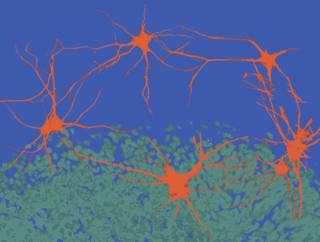
From major highways to little alleys in the meninges
, 2024
30 x 40 in (h x w)
Photograph
Cardiovascular Research Institute at Mount Sinai
The brain has protective layers called meninges that play a crucial role in its immune surveillance. Here we can observe a complete view of the outermost meningeal layer called the dura mater. In the images, blood vessels (shown in green) and lymphatic vessels (in red) are intertwined to form a traffic network for immune cells, such as macrophages (also in red) and B lymphocytes, to flow in and out of the brain. The flow of these B cells from blood vessel highways to little alleys in the meninges is important in sleep, a topic we are currently studying in the Swirski lab.




